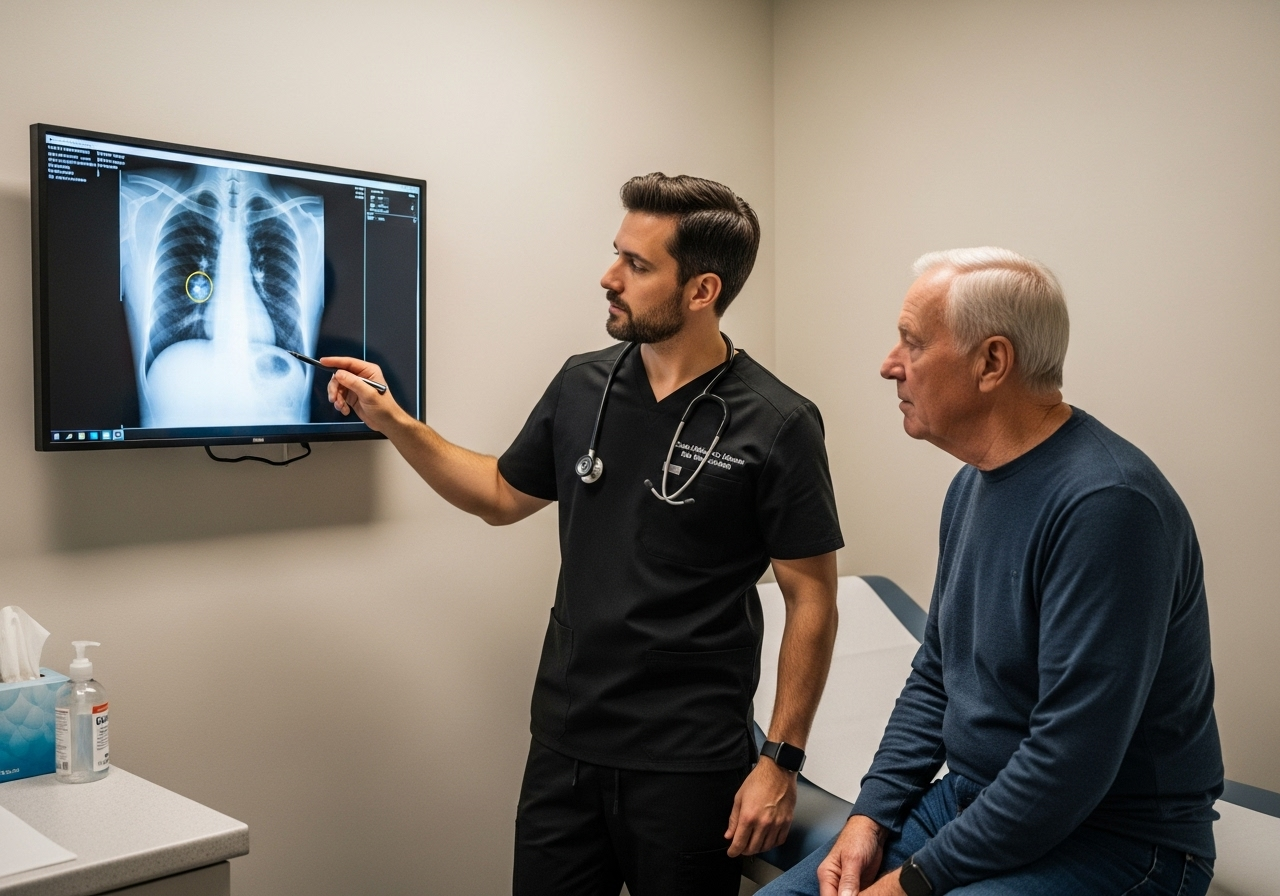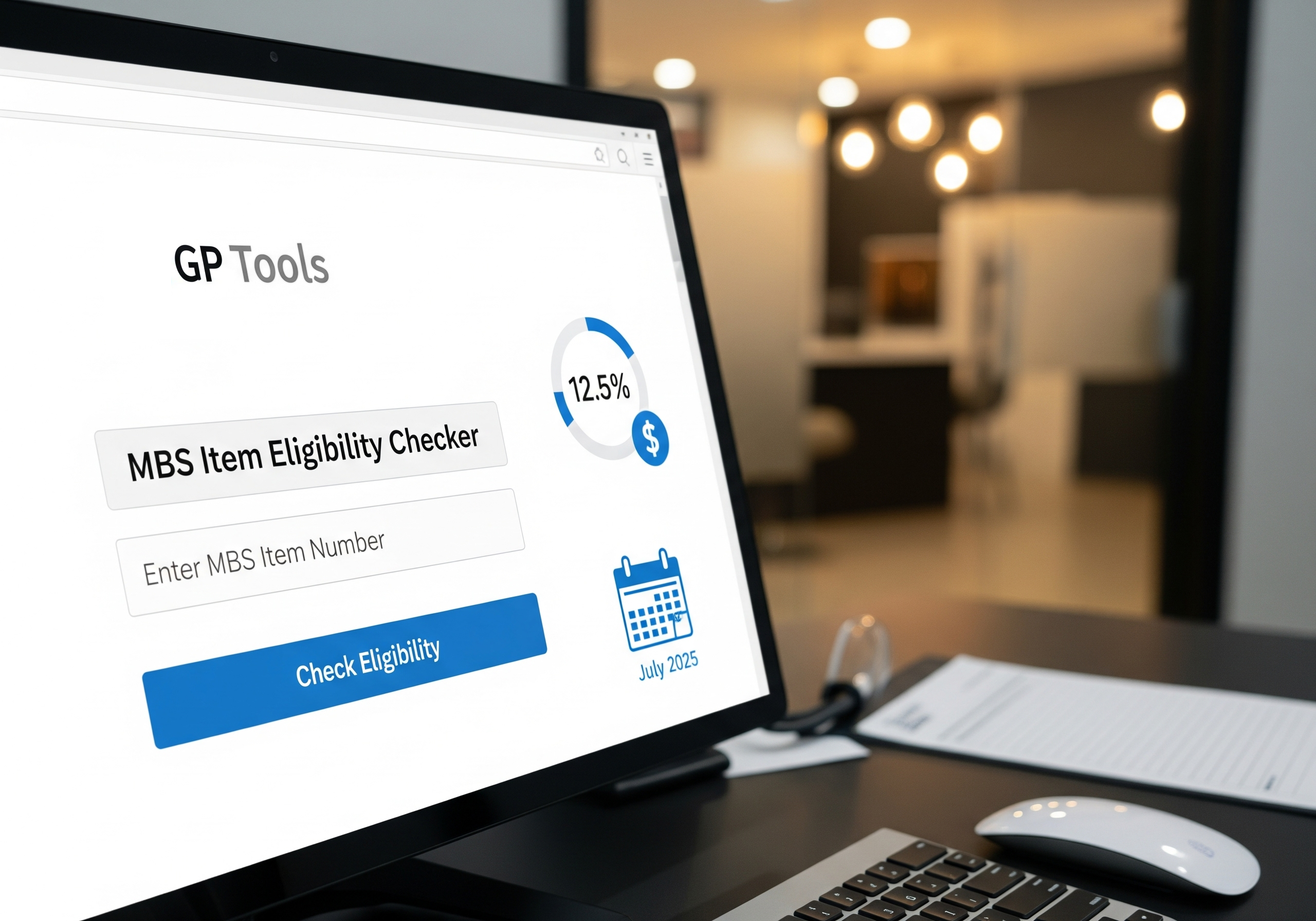Launching in July 2025, Australia’s National Lung Cancer Screening Program (NLCSP) is a significant public health initiative designed to maximise earlier detection of lung cancer and improve outcomes for many Australians by using low-dose computed tomography (LDCT) scans in high-risk individuals without symptoms.
The Imperative for Early Detection
Lung cancer remains the leading cause of cancer-related death in Australia and overseas, despite being the fifth most commonly diagnosed cancer. In 2024, it was estimated that over 15,000 Australians would be diagnosed with lung cancer, and nearly 9,000 would tragically lose their lives to the disease. This grim reality is largely due to late-stage diagnoses, with only about 11% of patients presenting at stage three, while over 40% are diagnosed at stage four, when the cancer has already spread beyond the lungs and has just a 3% five-year relative survival rate.
Compelling evidence from landmark international randomised controlled trials, such as the National Lung Screening Trial in the United States and the Nelson Trial in Europe, demonstrates at least a 20% reduction in lung cancer deaths when participants undergo LDCT screening. Crucially, these programs detected up to 70% of lung cancers at an early stage. The NLCSP is a direct response to this evidence, aiming to significantly improve health outcomes and save lives.
Core Eligibility Requirements for GPs
General Practitioners (GPs) play a critical role in identifying eligible patients and facilitating their participation. The program has four fundamental eligibility criteria that all must be met:
- Age: Participants must be aged between 50 and 70 years.
- Asymptomatic Status: Individuals must show no signs or symptoms suggestive of lung cancer, such as a persistent cough, coughing up blood, or shortness of breath.
- Smoking Status: They must either be a current smoker or have quit smoking within the past 10 years.
- Smoking History: Their smoking history must be at least 30 pack-years. A pack-year is defined as smoking 20 cigarettes a day for one year, and can be calculated by dividing the number of cigarettes per day by 20, and then multiplying by the number of whole years of smoking.
Beyond these criteria, GPs should ensure patients are suitable for a CT scan by confirming they can lie flat for five minutes in the scanner, are under 200 kilograms (due to scanner capacity), and have not had a symptomatic lung infection in the last 12 weeks. Patients who have had a full CT scan within the last 12 months or have one planned for clinical reasons in the next three months should delay their screening CT.
The GP’s Central Role: More Than Just Referral
GPs are at the forefront of the NLCSP, responsible for discussing the program with potential participants, assessing their eligibility, providing LDCT scan requests, enrolling them in the National Cancer Screening Register (NCSR), and managing results. GPs can proactively identify eligible patients using electronic medical record prompts or opportunistically recruit them during other appointments. It is the GP’s responsibility to enrol the participant in the NCSR, either through integrated clinic software or the healthcare provider portal.
An essential component of the NLCSP is the emphasis on smoking cessation support. Current smokers should be offered support at every clinical opportunity, as evidence clearly shows that screening combined with smoking cessation offers a synergistic benefit for overall survival.
Navigating Stigma and Promoting Equity
A significant challenge for the NLCSP is the stigma associated with tobacco smoking and lung cancer. Patients often face judgment and blame, impacting their willingness to participate, regardless of their smoking status. The NLCSP aims to challenge this public rhetoric by framing smoking as an addiction, not merely a ‘choice’, and promoting compassionate, judgment-free dialogue. GPs are crucial in adopting empathetic communication techniques and addressing personal or professional biases to facilitate sensitive discussions about smoking history and screening eligibility.
Recognising that lung cancer disproportionately impacts certain groups, the program has a strong equity focus. Cancer Australia is partnering with the National Aboriginal Community Controlled Health Organisation (NACCHO) to co-design culturally safe and appropriate screening services for Aboriginal and Torres Strait Islander peoples. GPs are encouraged to undertake formal cultural safety training to provide inclusive care. Mobile screening trucks will also be deployed nationally from November to reach high-risk populations in rural and remote regions, where smoking rates are often higher. More information is needed on incidental finding rates specifically in Aboriginal and Torres Strait Islander people.
Medicare Items and Reporting Standards
From July 1, 2025, two new Medicare Benefit Schedule (MBS) item numbers are available for NLCSP LDCT scans:
- Item 57410: For the initial screening LDCT scan, performed approximately every two years. The request must state that the patient’s eligibility has been assessed and confirmed.
- Item 57413: For follow-up/interval scans, performed as clinical follow-up within two years of a previous 57410 or 57413 scan.
Both Medicare items are mandatorily bulk-billed, ensuring no out-of-pocket costs for participants for the scan. GPs can use their usual referral forms, but the program-specific form is preferred to ensure proper identification, and including family history of lung cancer for PanCan risk calculation is important.
The recommended CT Dose is a volumetric CT dose index (CTDIvol) of ≤3.0 mGy for a standard-sized patient (170 cm and ~70 kg), with appropriate reductions for smaller patients and increases for larger ones. LDCT scans are performed without intravenous contrast, in the supine position during a single inspiratory breath hold.
Radiologists must adhere to a structured radiology reporting format and report results to the NCSR. This protocol, derived from the PanCan and Lung-RADS nodule management systems, ensures consistent reporting. The program classifies findings into six risk categories, from very low to very high risk, guiding the frequency of follow-up scans (e.g., 24, 12, 6, or 3 months). High-risk findings (Categories 5 and 6), affecting approximately 3% of participants, necessitate urgent referral to a respiratory physician or a lung cancer multidisciplinary team. Close to 50% of patients with high-risk findings are expected to have lung cancer.
Managing Incidental Findings
LDCT scans often reveal findings beyond lung cancer, known as incidental findings. In a study of Australian and Canadian participants, at least one incidental finding was made in 72.8% of people, with findings in 10.3% requiring clinical follow-up. The most frequent incidental findings reported were coronary artery calcification (69.0%) and emphysema (54.0%). Significant inconsistency in reporting of these findings was observed across sites, highlighting the need for a standardised reporting template to provide clear guidance on their clinical significance.
While these can provide opportunities for improving health outcomes (termed ‘actionable additional findings’), inconsistencies in reporting were noted in trial settings. The Royal Australian and New Zealand College of Radiologists (RANZCR) has developed guidance covering 26 specific incidental findings with corresponding management recommendations. GPs will need to understand the implications of these findings and have established pathways for further investigation or referral to manage potential patient anxiety. Clear guidance is crucial to reduce the burden on primary care providers and prevent inappropriate investigations.
Resources and Program Monitoring
To support GPs, comprehensive CPD-accredited eLearning modules and on-demand webinars developed by Lung Foundation Australia are available. These resources cover topics such as understanding lung cancer data, roles of healthcare providers, screening pathways, patient eligibility assessment, culturally safe communication strategies, and accessing key resources. The Department of Health and Aged Care’s NLCSP website also provides a wealth of information and a Healthcare Provider Toolkit. GPs should ensure their IT systems are integrated with the NCSR and that their usual radiology services are prepared for NLCSP referrals.
The NLCSP will be evaluated within its first two years of implementation to assess its effectiveness and delivery model, allowing for adaptation based on new clinical evidence, data, and technologies.
Conclusion
The National Lung Cancer Screening Program represents a significant leap forward in Australia’s efforts to combat lung cancer. GPs are indispensable to its success, not only through their role in identifying and referring eligible patients but also by fostering a supportive environment that addresses stigma and promotes equitable access to care. By familiarising themselves with the program’s guidelines, utilising available resources, and engaging in empathetic communication, GPs can make a profound difference in the lives of high-risk Australians, enabling earlier detection, improving treatment outcomes, and ultimately saving lives. This program provides a unique and time-critical opportunity to change the narrative around lung cancer and ensure all Australians receive the quality care they deserve.



